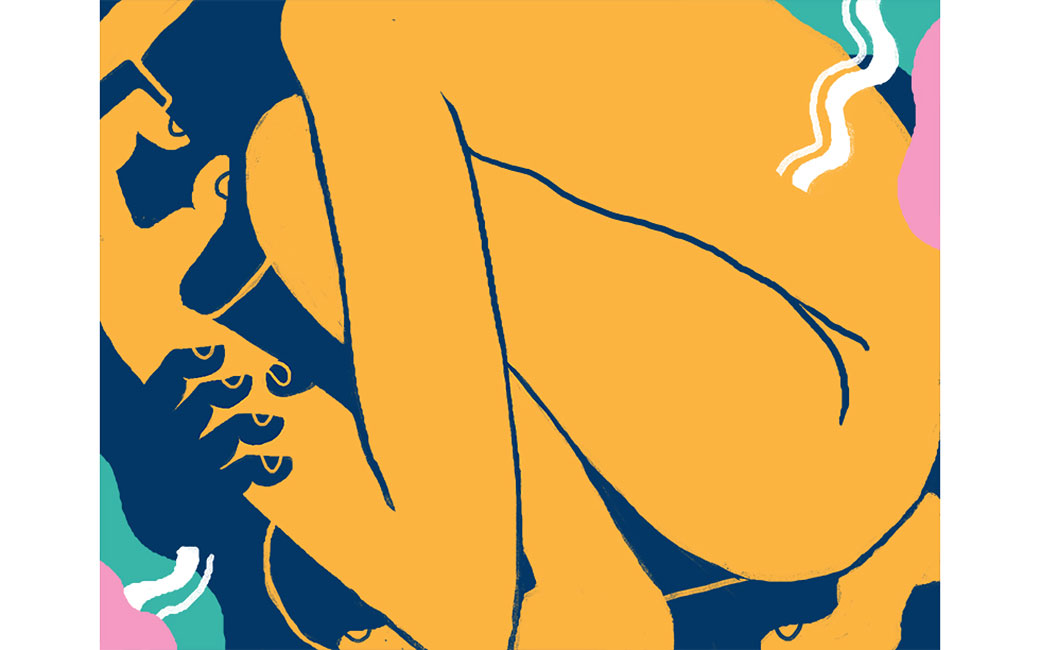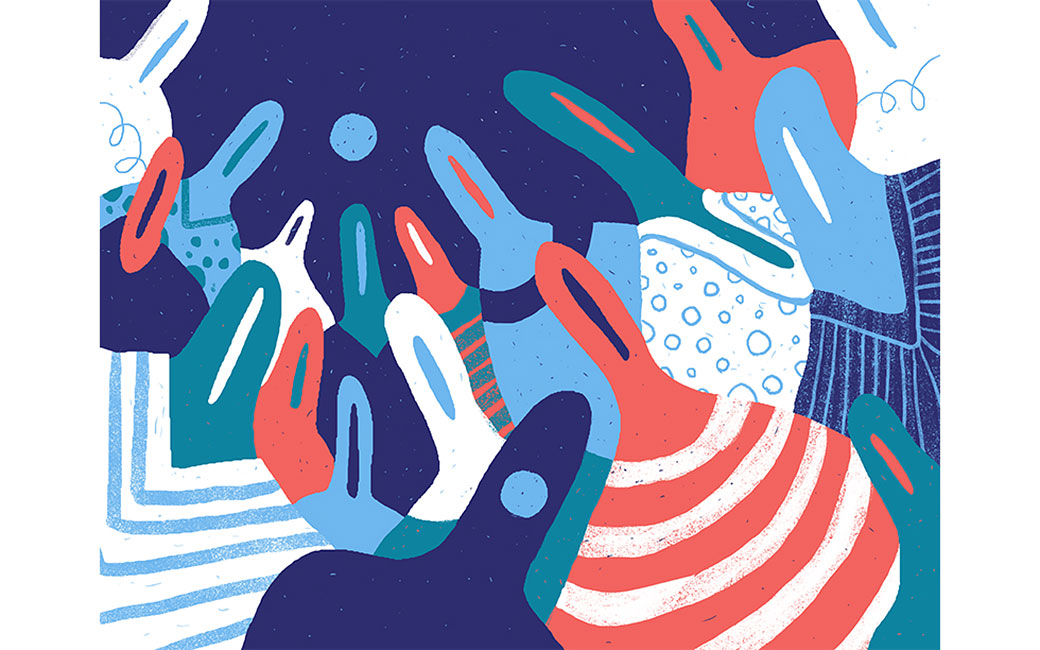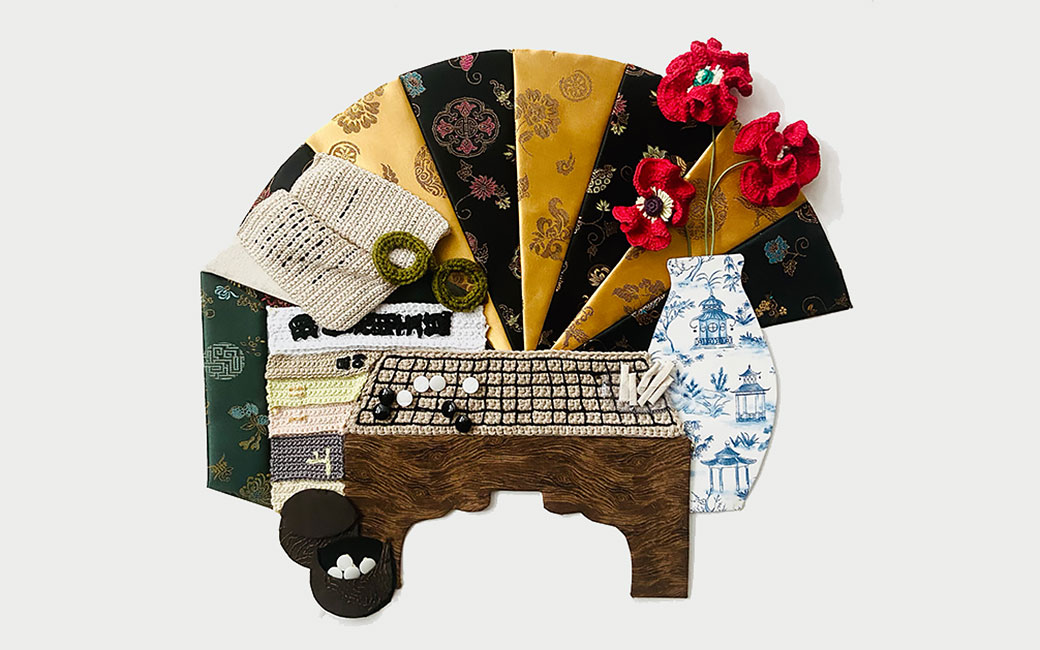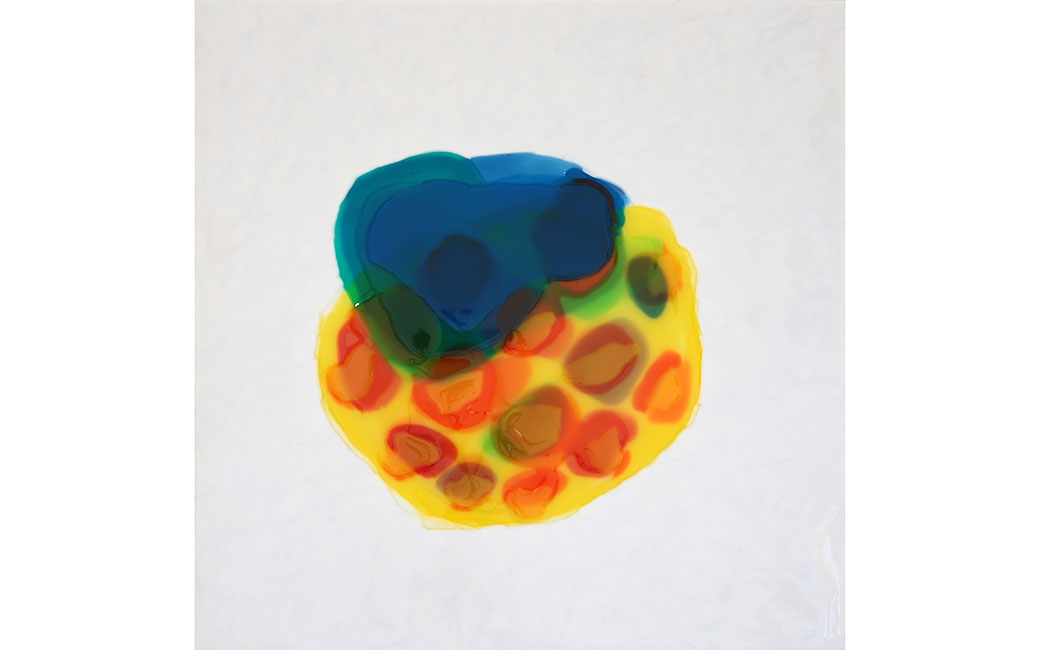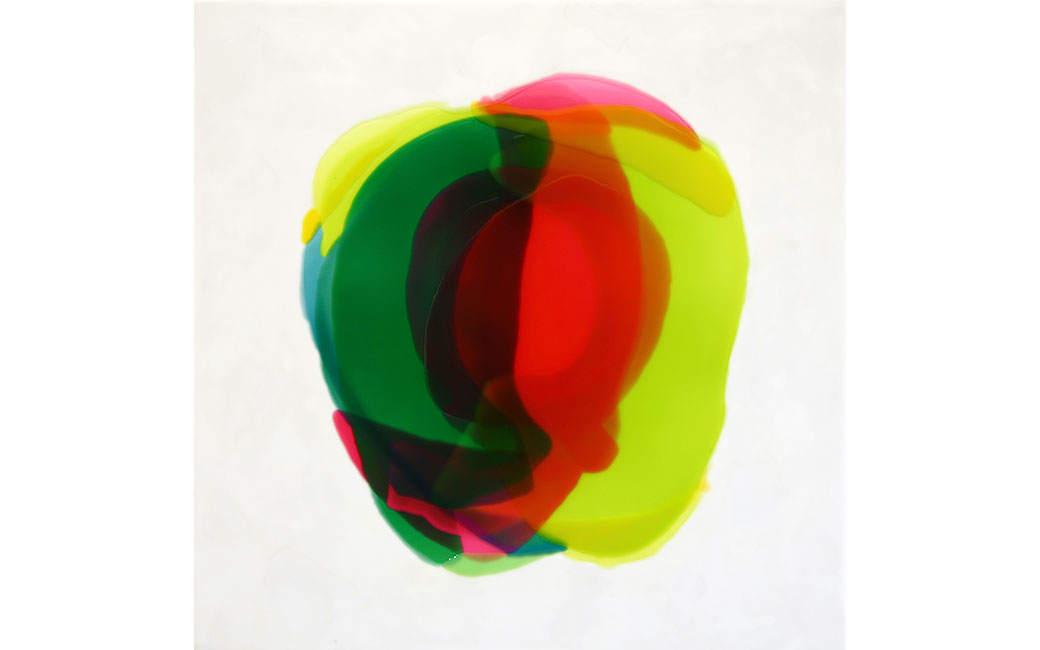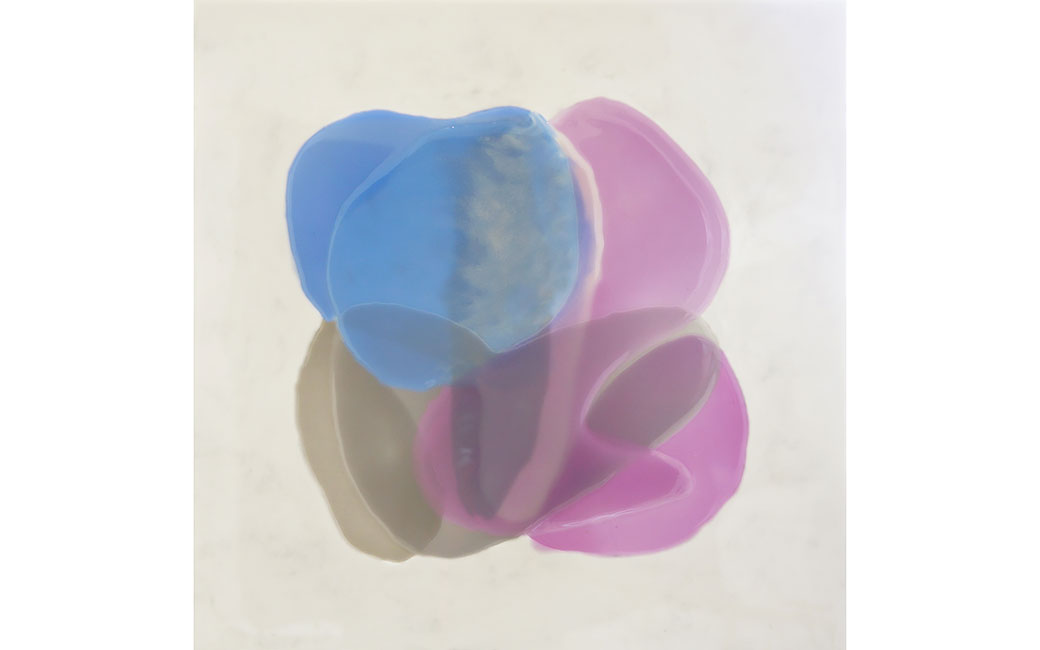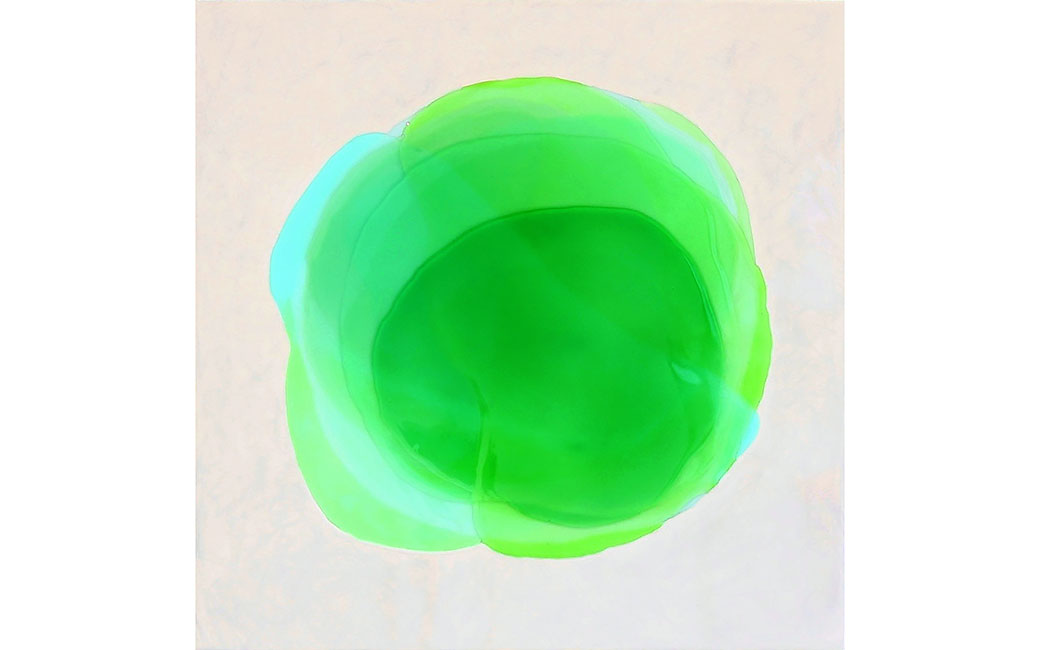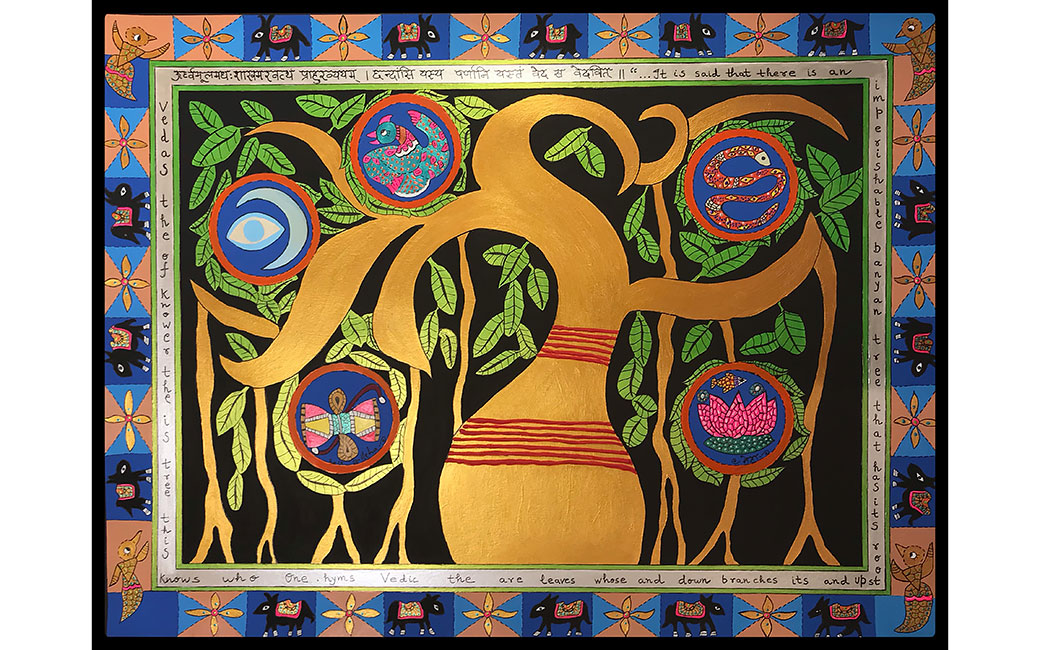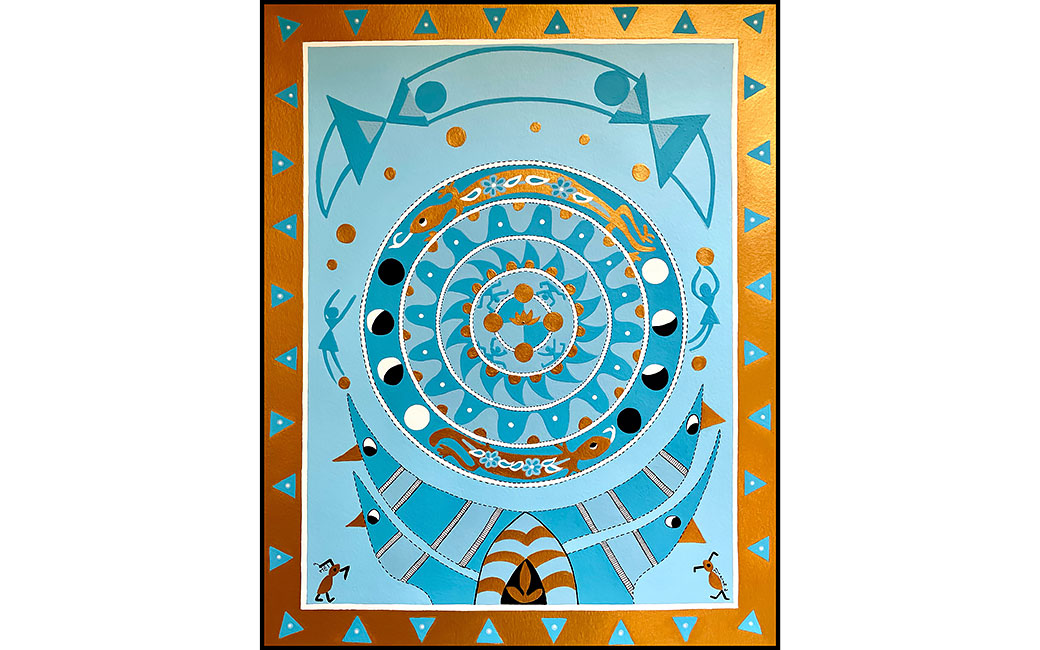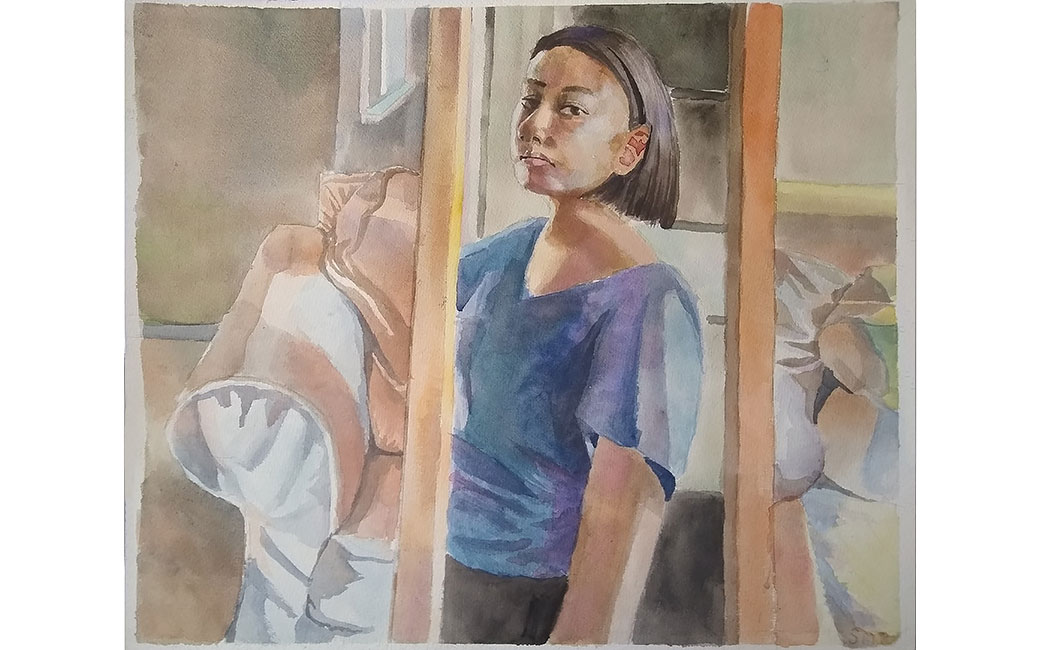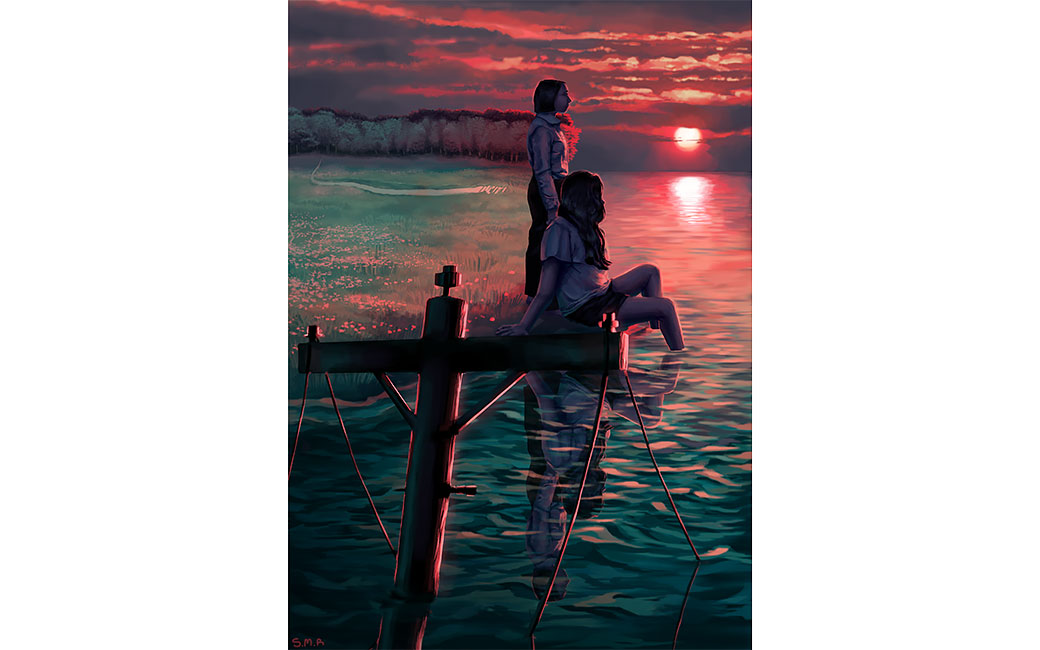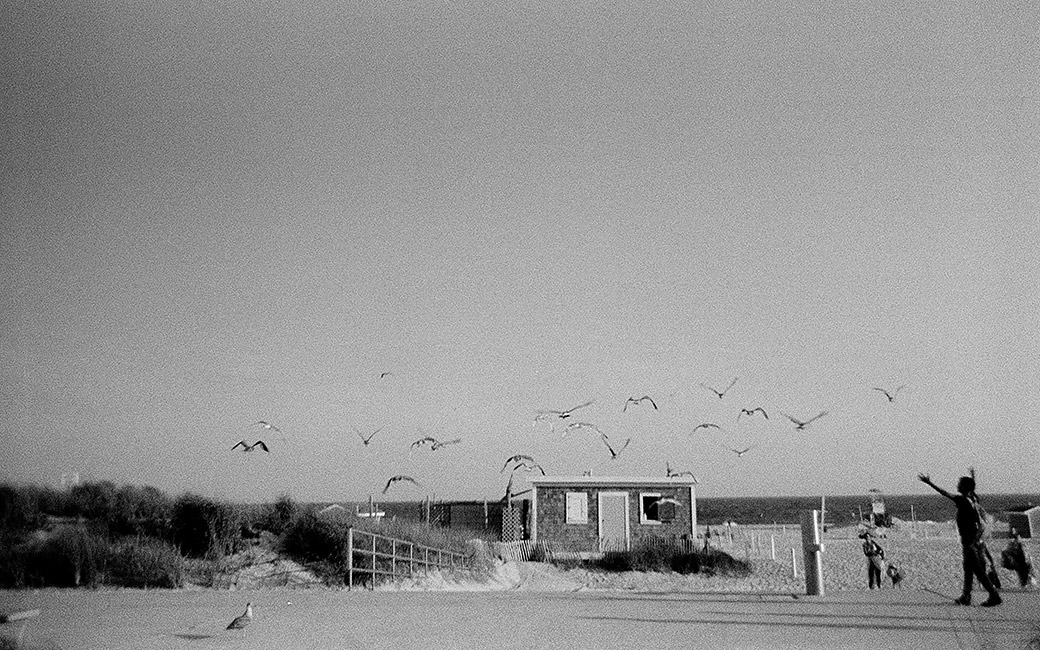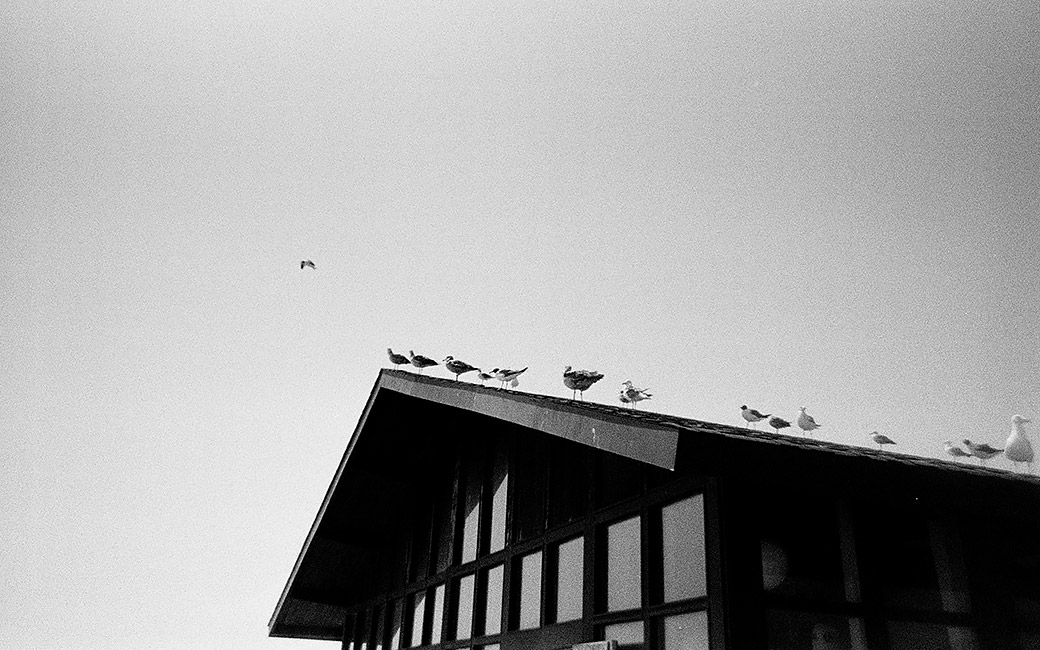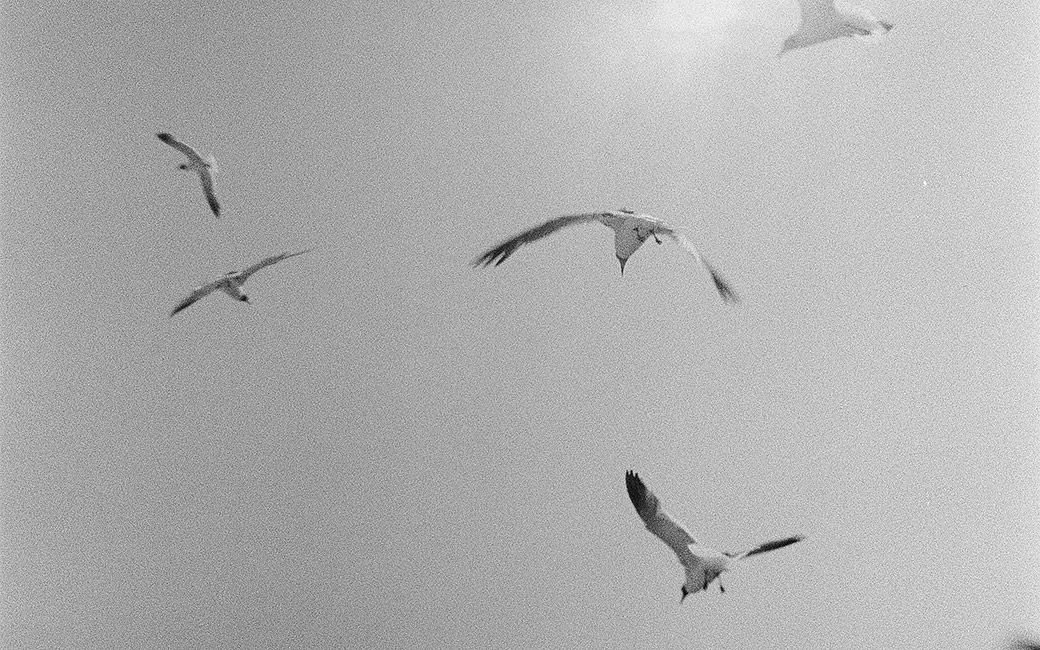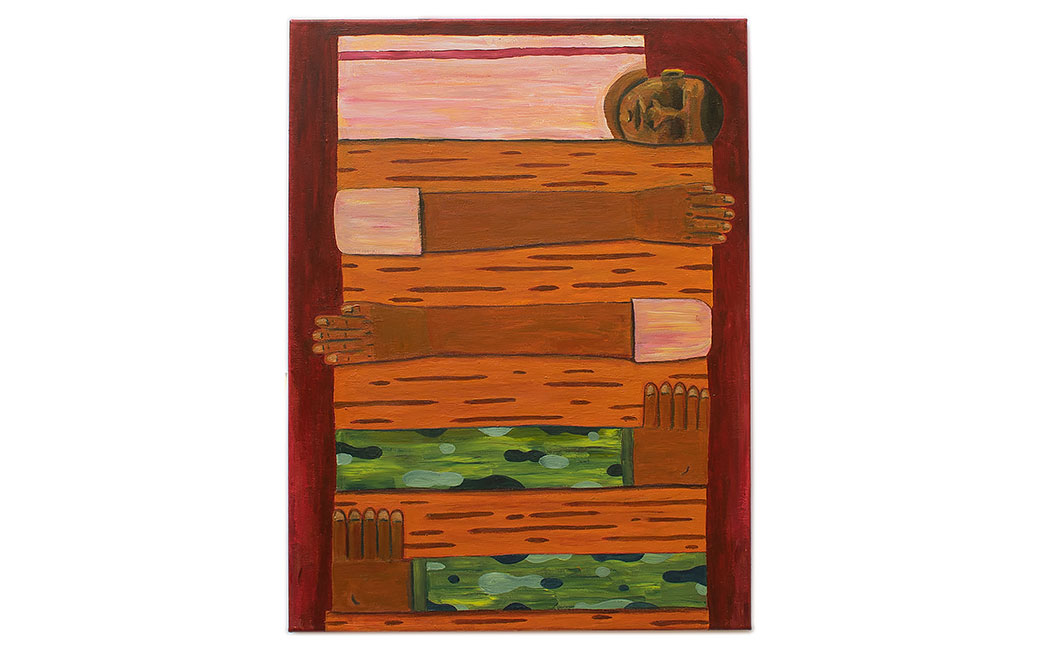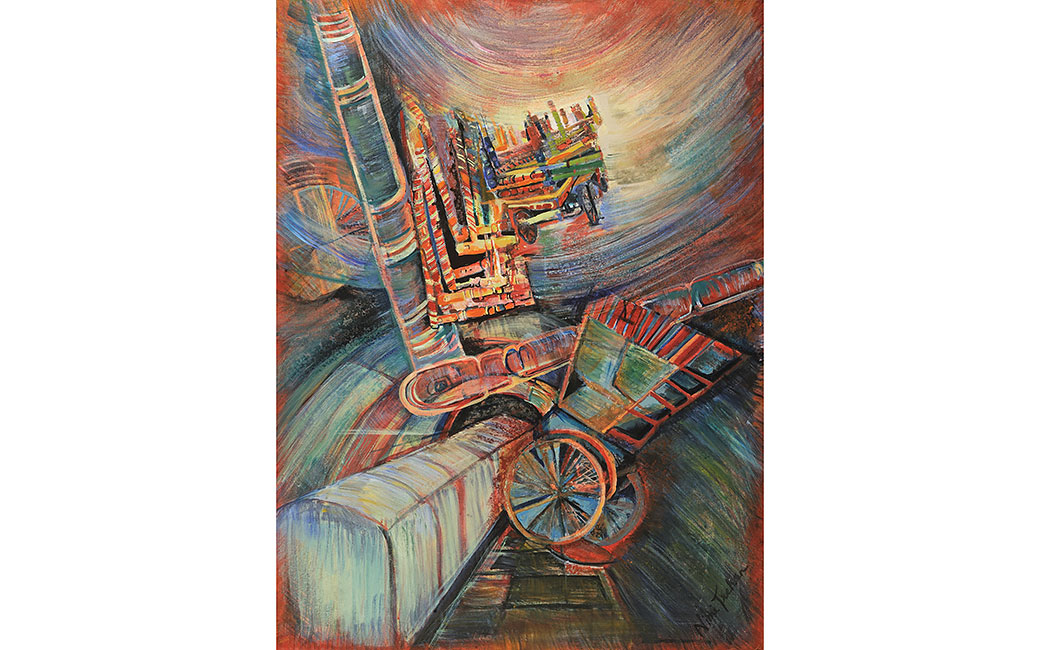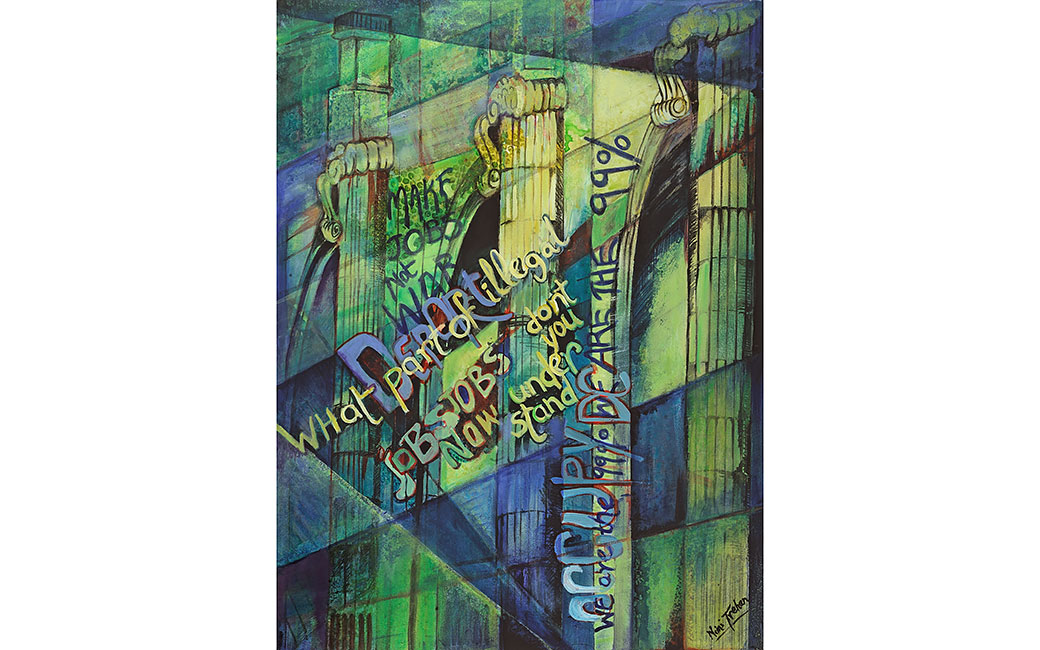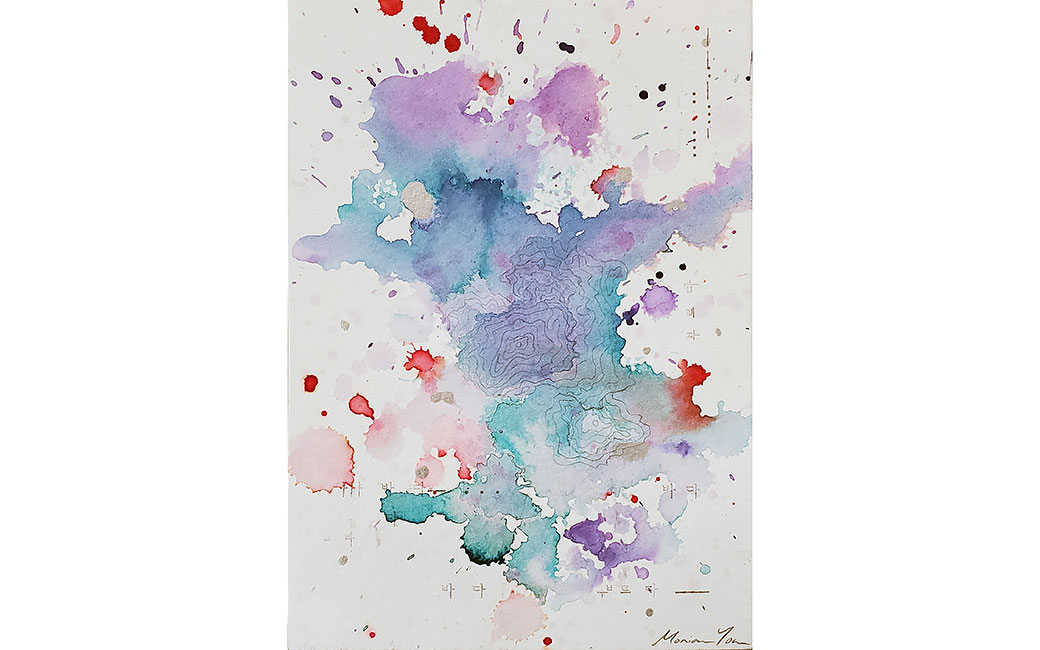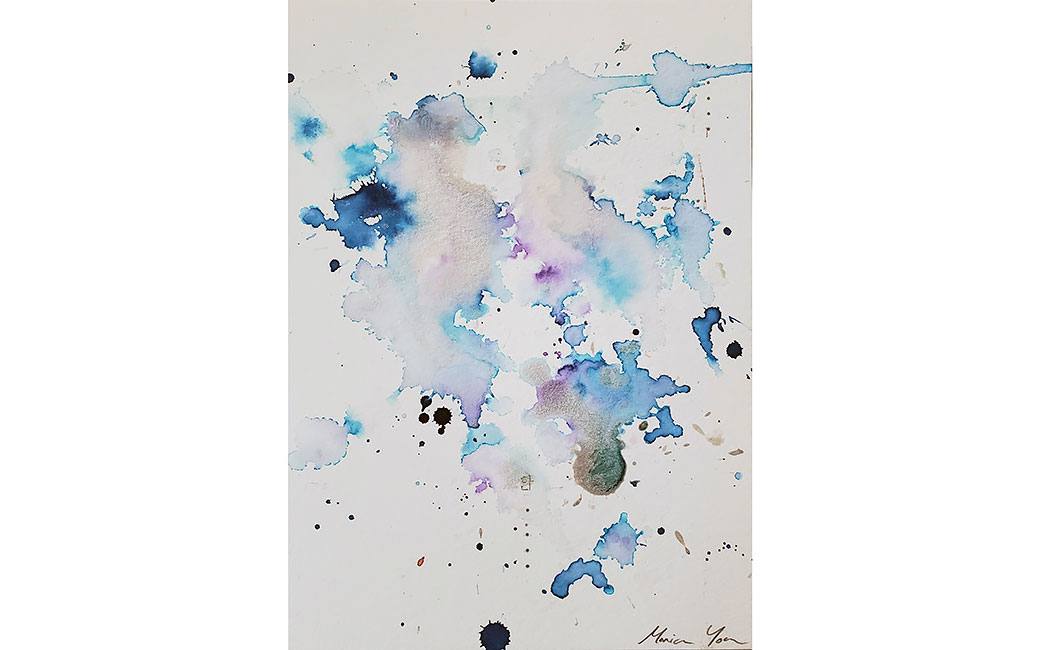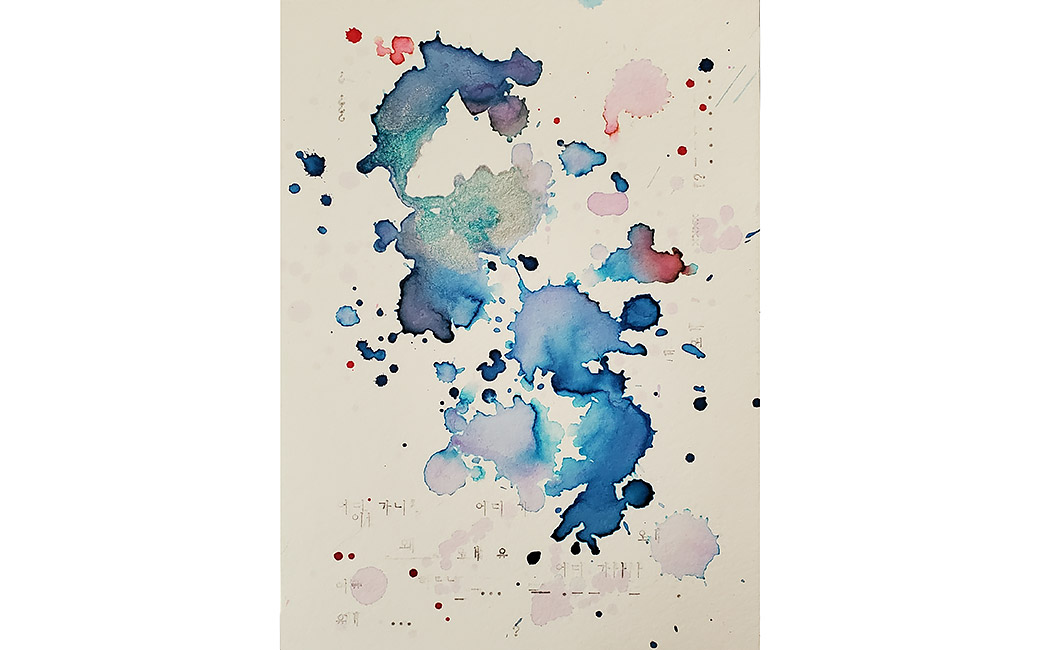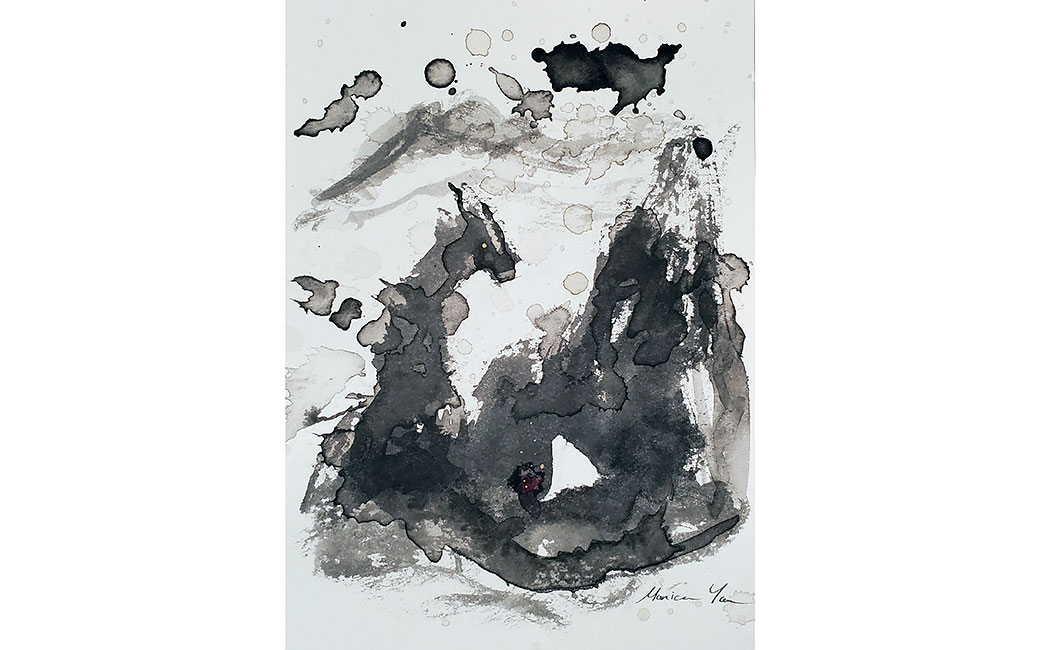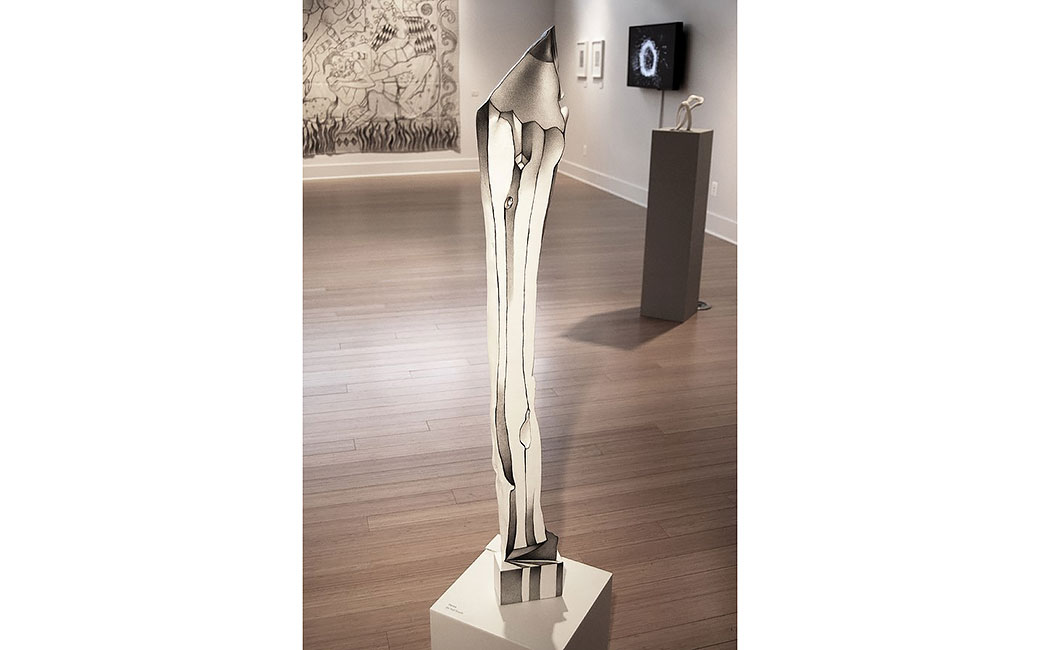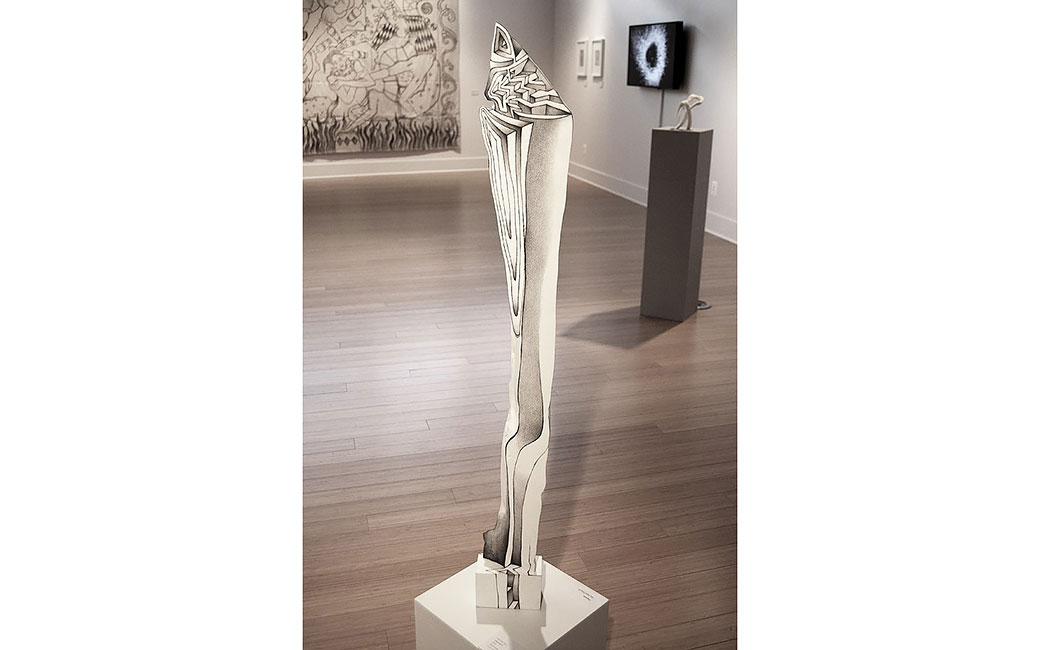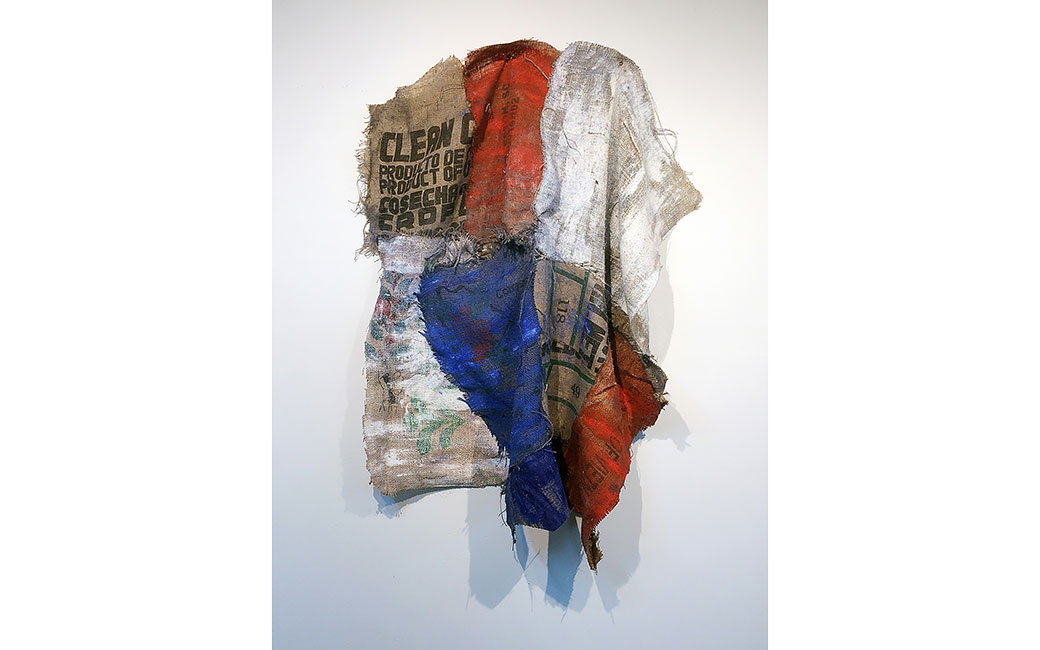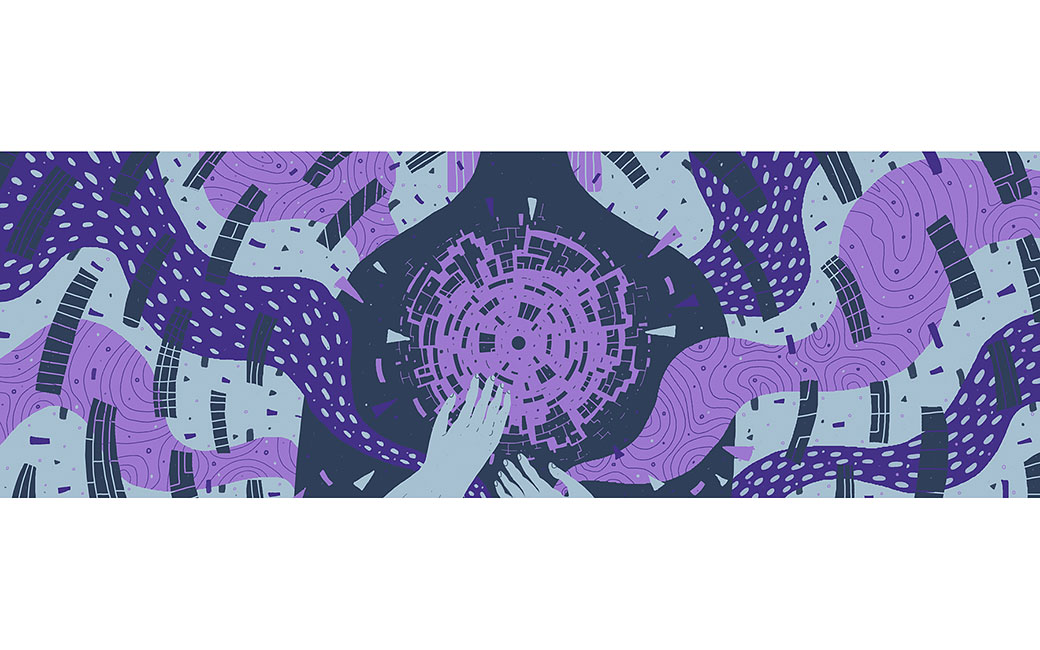
Identity, Memory & Perception
The artists in this section explore personal and historical memories, while embracing culture and self-identity.
Tima Aflitunov
Singularity: Describes the knot that densifies within like a singularity of a black hole. Becoming the only thing that is felt as it pulls in everything with its gravity.
Pressure: Shows how the expectations of others cause heavy, claustrophobic and crushing social pressure.
Glossophobia: Under the felt gaze of the observer, calming oneself doesn’t help. Fear of being judged and a feeling of becoming small prevail.
Tima’s work in visual art and creative writing is rooted in the idea of self, its transformation, and its connection to the whole. Tima explores various abstract themes that come out of the human element, from questions of identity to overall experience of existence. Giving a visual life to such subjects allows Tima to look at these concepts more objectively, to understand and manage them properly, or just gives him a chance to express feelings through the art form.
Learn More about Tima Aflitunov
Yunkyoung Cho
This work reinterprets the memories of my grandfather’s study in my childhood using the Chaekgeori technique (Korean traditional still life painting). It is a part of my memories with my grandfather; and it is a collection of things that he loved while he was alive. I could feel my grandfather’s life as an immigrant from Japan to Korea through the things he liked. As I completed this project, I could again feel the nostalgia and life of an immigrant like my grandfather felt while living in the United States.
Yunkyoung Cho is a fiber, installation and mixed media artist based in the Maryland area. She has dedicated her life to expressing beauty in physical form carefully designed with aesthetic, technical and symbolic aspects.
Learn More about Yunkyoung Cho
Farida Hughes
Blend 21: [My husband] was born in Korea (also grandparents from North Korea) and moved to Australia at age 6. He also lived in Texas, NJ, Georgia, NC and England. He has been teaching in the South Bronx for 15 years where people think he is a Chinese deliver[y] man.
Blend 32: So my blend is on my dad’s side—Syrian/Lebanese. My mom—Scottish, Irish and English... Me, I am half of each! I was born in Beirut, Lebanon, lived in Iraq, then evacuated from the Six-Day War from Lebanon, took a huge ship that brought us to America. Then back to live in Kuwait. Then moved back to Paris. Then here to NY to study art. Then here to D.C.
Blend 35: Both [my parents] might be considered children of the Second World War. My father was born and grew up in Minamata...in S. Japan. (That town is...known internationally for a serious mercury poisoning...that critically affected the local fishing community.) My mother grew up ...in S. Denmark, on an island in the Baltic near the German border. Living 50 miles across the bay from Nagasaki, my father witnessed the mushroom cloud left by the atomic bomb dropped there. My mother’s father was German. Living in Denmark, he managed to stay out of the military, but in 1944 German citizens, regardless of country of residence, were called up for service. My mother was 4 when she witnessed her mother receive the news that her father would not be coming home. My father and mother, both probably possessing strong interests in reconciling for themselves what was a youth defined by a fractured world, traveled to and studied in the U.S. ...My Japanese grandfather permitted my father to [attend college] in the U.S. under two conditions: that he return after graduating and ...to not bring home a blue-eyed, blond girl. He broke both conditions. In 1962, my mother–knowing that there was a 50/50 (sic) that the marriage would work out–bought a one-way ticket to Japan. They were married shortly thereafter, at a church, during a typhoon.
Blend 36: Both [my wife] and I are Chinese. She was born in Shanghai and moved to the US when she was nine. I was born in Michigan. Although fully Chinese, I’m considered an “ABC” (American Born Chinese) by the Chinese community and, to them, pretty much an American. We live in an area where there are a decent number of Asians, but we’re still different from the majority. Teaching ethnicity to the kids has been a bit of a balancing act. You want them to be “color blind” to race, but also celebrate and embrace peoples’ heritage and cultural history...to fit in and also be different at the same time. Even though we try to speak Chinese at home and both kids go to Chinese school on Saturdays, “being Chinese” is a hard concept to grasp for a kid. ...[We] took the family to Shanghai on vacation in 2016. After seeing all the people in the streets, [my daughter] remarked, “Wow, everyone here looks like me!” Going to China really drove home the concept of what it means to be Chinese. We live in the U.S. and are Americans, but, at the same time, we have the history and culture of China within us as well.
Farida Hughes is a visual artist based in Baltimore, MD working primarily in oil paint, epoxy resin and mixed media on panel. She tells human stories of identity and relationships through the fluidity and color harmonies of paint. With vivid color and abstract form, each of her “Blends” paintings display a composite portrait of the layers of an individual’s cultural and ethnic backgrounds, based on stories that she solicits and collects. This series began as a way to unwrap her own multicultural (Asian-Indian and German) background, and subsequently grew to celebrate the unique blended-ness of each person contributing a story, and the effects of historical moments that the narratives inevitably present.
Learn More about Farida Hughes
Jia Le Ling
Dance of the Bellgadon: Is a dance about learning how to use one’s own body to make sounds. Its movements are inspired by the Tangki ritual, a Chinese Folk Possession Ritual.
Transforming Masks: Is a dance about masculinity, and about the artist’s revelation of his layered identities. It’s movements are inspired by the Tang-ki ritual, a Chinese Folk Possession Ritual.
For these non-choreographed, nascent performances, Jia Le taps into his subconscious memory of rituals he watched as a kid with his grandmother. These rituals come from the realm of Chinese Folk Religions that Jia Le repressed for a long time as unnecessary superstitions. He now sees this religion as a crucial source to his repertoire of bodily movements that convey his emotions. These performances reflect his pursuit to reconnect with his cultural roots in order to find alternative ways to represent his inner self. Through these dance performances, Jia Le hopes more people become aware of the Tang-ki ritual as it is a disappearing tradition. It is a powerful and transformative process that can not only become a powerful tool to make art, but also be a form of protest, a form of healing and a form of expression.
Jia Le Ling is an interdisciplinary sculptor, currently based in Baltimore, MD and Singapore.
Learn More about Jia Le Ling
Neha Misra
Open Secret of the Imperishable Banyan Tree: This painting explores my mythological, ecological, historical, intergenerational connection with the Banyan tree — one of the most holy trees in India where I grew up. This painting started amidst aching for the Banyan tree outside my grandparent’s home in northern India. The aching was both physical — for the memories associated with the family home, and symbolic — an effort to reconnect with life stories from which my journey to America has brought me so far away. In these times of global climate emergency, the Banyan trees are of immense ecological importance. They sustain diverse species of birds, primates and creatures that disperse the seeds of hundreds of other plant species.
The tree is used for a variety of medicinal benefits across the South Asian subcontinent. The Banyan tree is also associated with many reverential traditions and myths. It is associated with the Hindu holy trinity and plays a vital role in many family rituals. Cruelly, this sacred tree was also used by the colonizing British power in India to hang many freedom fighters. This painting embodies many of these stories. On the border are lines from the holy text “Bhagavad Gita” which relate the upside-down branches of Banyan to the illusionary nature of life, and the wise one being one who can discern the nature of reality from illusion.
Sacred Interbeing Lessons from a Tropical Indian Lizard: This painting is inspired by a Chipkali — a tropical Indian lizard that entered the place of worship in my parent’s home in Delhi, India during the 2020 lockdown. A series of intergenerational WhatsApp conversations between Delhi and Maryland on the reverence for lizards rooted in diverse myths and beliefs followed. My curiosity led me virtually to the legend of a temple in South India which has healing lizard engravings on the ceiling of a small chamber. Lizards represent varied beliefs across human civilizations, including communication between human and other worlds. Killing a lizard is believed to bring negative effects in many cultures. What if we learn from nature’s interbeing intelligence, instead of brushing off this reverence for natural beings in the times of artificial intelligence as superstition? What if the real superstition is the human arrogance that is plundering Mother Earth to which we belong? In the times of planetary crisis, this painting is dedicated to the spiritual ecology of seemingly ordinary beings like lizards that hold extraordinary lessons of planetary stewardship through their symbols, biology and anatomy alike.
Neha Misra is a contemporary visual folk artist, poet and an award-winning global climate justice advocate. Neha’s Earth stewardship centered creative studio fosters planetary healing through the cathartic power of multi-disciplinary art forms. Neha’s paintings draw inspiration from diverse Indian folk-art traditions and the sacred geometry knowledge systems of her heritage, her foundational education in physics, and a deep reverence for Mother Earth embodied in her lifelong environmental work.
Learn More about Neha Misra
Socorra Mateo Reggie
Self-Portrait: Sunsets and doorways, windows and mirrors. The reason for creating these drawings stems from some sort of desire to record a scene and filter it through my viewpoint, even if it isn’t particularly unique.
Sunset on Memory: The borders between one state, or place, and some other – these subjects are fascinating to me, space-creating, eye-catching. They imply much more than they show, creating a steady sense of atmosphere through the conjuring of a mood, such as nostalgia, or intrigue.
I am currently a junior at the Carver Center for Arts and Technology. I was born in Annapolis, MD and have also lived in Oregon and California. Before attending Carver, I attended a school that gave me the freedom to explore what motivates me in life. It was here that my interest in art was nurtured and developed. I often struggle to identify what it means to be Asian American. As someone who is half Filipino and half European descent, my features may identify me to others as physically “Asian” but not enough to make me feel a strong sense of ownership for what that means on a deeper level. I feel American but not American despite being born and raised in this country. My art reflects this sense of boundaries and borders between one state, place, and some other.
Ellie Rha
수박 (Watermelon) Summer #1-5: Proven not just in art but also in life, the stories of Korean matriarchs are unjustly underdeveloped and ignored when their stories are the ones that are the catalyst for many others. This piece is an expansion of Rha’s work on stories of love and community. In this piece, we see three generations of Korean women coming together on a summer day on the East Coast.
Ellie Rha is a filmmaker, photographer, creative director from Queens, NY currently studying film and media studies and history at Johns Hopkins University. For the past two summers, her identity has become a grounding space for reflection on intergenerational and cultural expectations with her intentional community.
Learn More about Ellie Rha
Rey Velasquez Sagcal
Bahay House: This painting features a figure, modeled after my father in his work clothes, sitting enclosed in a house. The figure and the house appear sturdy. Yet there is also an uneasy tension as the figure’s head is disjointed from their neck and their limbs are compressed on each side. Partly, I'm reflecting on the experience of immigrants of color—migrating to the United States, struggling, and succeeding in building a new home for oneself, and still finding oneself unable to feel comfortable at home. By the nature of one’s skin color, accent, or name, one remains a perpetual foreigner in this new home.
Kalat no Pako (Scattered Nails): This painting features the figure in the middle of the space surrounded by scattered nails. There is an undertone of violence with how the nails point toward the figure’s vulnerable body, suggesting the possible nailing of their flesh. There is also a hint of objectification — their body is placed here as just another nail among countless others. Yet despite all of this, the figure exhibits a resolute surrender with their outstretched limbs and open palms.
Tabla (Lumber): This painting shows a pile of lumber and the figure’s detached limbs placed on top of each other. As with the other pieces, I am reflecting on my father’s physical sickness brought on by his work and I am responding to the objectification experienced by immigrant workers. While the lumber and the body parts manage to create a commanding structure, I remain unsure if the price of dismemberment is worth it.
Rey Velasquez Sagcal is a Filipino artist working primarily with video art, drawing and painting. In 2019, he graduated from the Maryland Institute College of Art with a BFA in illustration. He is currently based in Baltimore City.
Learn More about Rey Velasquez Sagcal
Nimi Trehan
Chaotic Order: On a recent visit to Old Delhi, I witnessed such a sensory overload. Contrasting, almost jarring colors. Blaring traffic — all kinds of wheels — rickshaws, bicycles, automobiles, the metro. My head was swirling, wanting to get out of the place. I wondered if anything ever got done in an insane place like this. Then I realized that this crazy place was a hub for business, there was a method to its madness and there was a frenzy of activity — one just had to understand the system, the maze, the people, how to get around. There was a lot of order within the chaos and that’s what I am expressing on canvas thru the swirling brushstrokes, the images, and the colors.
Orderly Chaos: This painting is a contradiction to the “CHAOTIC ORDER” that I have observed in Washington, DC. I have lived in two of the most important capitals of the world — New Delhi in the East and Washington, DC in the West. Just as I have observed order within chaos in Delhi, I have also witnessed the reverse situation in DC. Looking around, the city looks so orderly, the architecture so formal and classic, the streets well laid out and very clean. In all my travels, I find this city the cleanest, most orderly in the world. Yet beneath it all, there is unrest, chaos, protests against illegal immigrants, the disparity amongst the haves and have nots, the unemployment, racial tensions and so on.
Nimi Trehan is a Maryland-based artist with a background in art and interior design. She has exhibited her art and designed interiors in the U.S. and internationally.
Learn More about Nimi Trehan
Monica Youn
Ocean Views: The ripples and typewriter text are both used to express the ocean. It is a simple word in Korean, so it is easy to remember. My father’s side of the family is from Busan, a large port city in South Korea
Hearts on Fire: "Han," which is typed into the piece, is a word used to express rage, grief, and loss of identity, while at the same time, is seen as a core piece of being Korean by some.
Did I Lose You?: I used a typewriter that was from my grandparent’s house for this piece. The typewriter needs work since the buttons sometimes stick and spaces are added. It is similar to how I eventually lost my ability to speak Korean when I was young. However, hearing the language and seeing the letters is comforting to me.
Shroud: In honor of all the Asian women that are forced to take on the stereotypes of being quiet, meek and beings that exist solely for sex.
Storytellers: The piece depicts a figure by a fire with a dragon in the background. It is an ode to my love of folklore and stories.
Born in Essex, NJ, Monica Youn has resided in Harford, MD for the past 12 years. She received her BS in Art+Design and Business Marketing from Towson University. Youn exhibited her solo show, Tall Tales, at Towson University’s Center for the Arts and participated in group shows at venues throughout Maryland including Hamilton Gallery and Maryland Art Place (MAP), Delaplaine Arts Center, Asian Arts and Culture Center, Maryland Federation of Art (MFA), Annmarie Sculpture Garden and Arts Center, and Harford Artist’s Association, and Lore Degenstein Gallery in Selinsgrove, PA. She will be a part of a fall 2021 show at Index Art Center in Newark, NJ and is preparing for her 2022 solo exhibition, Modern Lore, at Hamilton Gallery.
Learn More about Monica Youn
Hsin-Hsi Chen
Hsin-Hsi Chen disorients viewers with actual and imaginary planes of drawing, light, shadow, illumination in illogical sequences of complex 3D structure, installation and interactive dimension — to present her interest and vision in riddled paths of existences, the unknown of the universe, surreal, geometric and architectural constructions. The untouchable and invisible time overlaps the unpredictable occurrences and growth in space as the light illuminates those mysterious elements and source of life. The shadow within reflects its subject as the soul to the human being.
Learn More about Hsin-Hsi Chen
Jinyoung Koh
Co-Existence #3048: As a 1980s-born artist from South Korea, I grew up observing the end of the Cold War, the transition to color television and the rise of the Internet. When I moved to the U.S. in 2007, the transition to new social and cultural systems caused me to reflect on my cultural identity and the purpose of my artistic and academic practices. The first wave of shock occurred when I could not provide answers surrounding my socio-cultural identity during my studies in the U.S. I had never been asked about my cultural identity in South Korea. I suddenly began to ask myself, “Who am I? What does this work say about me? How do they see me? How do I see myself?” I struggled to understand my cultural identity and how it would influence my artistic process. The questions that constantly ran through my head needed to be expressed. I poured these thoughts and emotions into my work titled Co-Existence. My exploration and trajectory with sites and meanings make a connection between the past, the present, and the future in terms of controversial political issues in our surroundings of delicate global dynamics. I reach to work with oil and sewed burlap that had gone through a long history of transportation and trading within the global market system. These materials are our society’s metaphorical byproducts and substitutes of ports, warehouses, markets, and cities through the current issues that we are facing in the global society of cultural re-contextualization.
Born in South Korea in 1981, Jinyoung Koh is an assistant professor, Department of Art + Design, Art History, Art Education at Towson University. Dr. Koh earned a BFA from the Art Institute of Chicago and an MFA in photography and media from the California Institute of the Arts. He completed his education with both a Master of Education and a Doctor of Education in art and art education from Columbia University.
